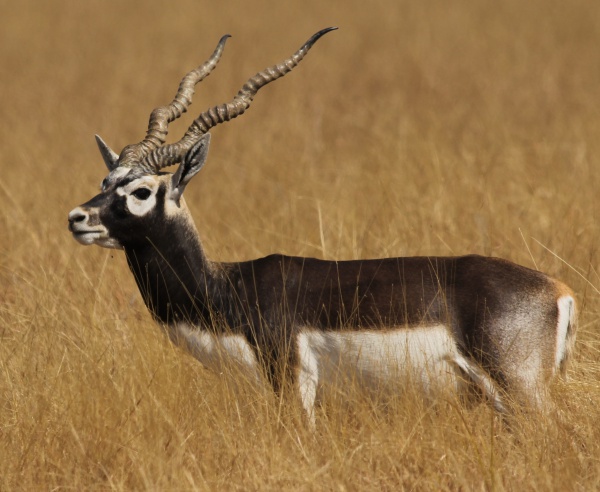Facts About Blackbuck
The blackbuck, also known as the Indian antelope, is a striking species native to India, Nepal, and Pakistan. As the sole surviving member of the genus Antilope, it was first described by Carl Linnaeus in 1758. There are two recognized subspecies of blackbuck. Males typically weigh between 20 and 57 kg, while females are lighter, weighing between 20 and 33 kg. They stand about 74 to 84 cm tall at the shoulder. One of their most distinctive features is their long, ringed horns and striking coloration. Males exhibit dark brown to black upper parts contrasted with white underparts.
Blackbucks are diurnal and live in segregated herds consisting of females, males, or bachelors. During mating season, males perform a behavior known as lekking to attract females. These antelopes are herbivores, primarily grazing on low grasses but occasionally browsing. Females reach sexual maturity at around 8 months, whereas males mature a bit later, at 1.5 years. Mating can occur throughout the year, with a gestation period of 6 months, usually resulting in the birth of one calf. They thrive in grassy plains with easy access to water.
Interestingly, the diploid chromosome number of blackbucks varies between males and females. Unfortunately, their numbers dwindled during the 20th century due to hunting, deforestation, and habitat loss. In response, various conservation efforts have been implemented. Hunting blackbucks is now illegal in India under the Wildlife Protection Act of 1972. These antelopes hold a special place in Hindu culture and are revered in many Indian and Nepali villages.
Research has explored various aspects of blackbucks, including their taxonomy, genetics, physical characteristics, distribution, habitat, diet, reproduction, threats, and conservation efforts. They have even been introduced to countries like the United States and Argentina. The interaction between blackbucks and humans is well-documented, encompassing historical references, cultural significance, and conflicts. The blackbuck remains a unique and important species, consistently studied and protected to ensure its survival.

 Sri Lanka
Sri Lanka